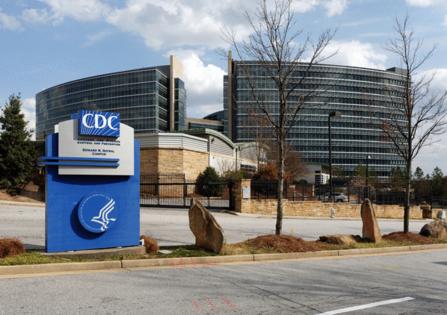US, Europe diverge on infectious disease messaging
Published in Health & Fitness
STOCKHOLM — In both the United States and Europe, two public health agencies aim to fight the spread of infectious diseases.
But the Trump administration’s rapidly evolving approach to public health prevention has highlighted stark and growing differences in their approaches.
While the Centers for Disease Control and Prevention was born out of efforts to eliminate malaria in the U.S. in the 1940s, the European Centre for Disease Prevention and Control, a multicountry partnership established in 2004 and based in Stockholm, was driven by responding to the 2003 outbreak of severe acute respiratory syndrome, or SARS.
The CDC is larger in size and scope. But both agencies face similar issues.
COVID-19 drew further attention to public health efforts to thwart medical misinformation and provide guidance on minimizing the spread of infectious diseases. Both the U.S. and European agencies have struggled against vaccine hesitancy and emerging threats. More recently, the public health bodies have diverged in their approaches.
In the U.S., prominent figures have elevated vaccine mistrust while the CDC awaits Senate confirmation of its director. The United States has de-emphasized infectious disease programming through a restructuring that the administration says will prioritize reducing chronic disease. The Department of Health and Human Services has cut hundreds of grants related to vaccinations, including $12 billion in funds used for vaccine clinics and similar measures, although those cuts have been halted in the courts.
Earlier this month, the Food and Drug Administration ousted Peter Marks, the top regulator of vaccines and other biological products.
“To dismiss children’s deaths due to infectious diseases that are preventable by vaccines as just expected or not a big deal, that’s just not acceptable to me,” Marks said in a CBS interview Sunday.
HHS Secretary Robert F. Kennedy Jr., encouraged measles vaccination on the social network X, formerly called Twitter, and during a recent CBS interview — days after touting two unproven measles treatments.
“The federal government’s position and my position is, people should get the measles vaccine, but the government should not be mandating those,” Kennedy said, his strongest statement on the issue to date.
But he also took aim at vaccine safety during an Indiana event Wednesday.
“It’s outrageous that we don’t have a surveillance system that functions,” said Kennedy, referring to the Vaccine Adverse Event Reporting System.
“We’re going to find out what contribution vaccines and everything else — mold, EMF (electric and magnetic fields), food ― all of these other exposures began in the late 1980s, which one of those are the culprits,” he said.
The mixed messaging promoting vaccines while also questioning their safety in the U.S. stands in contrast to the ECDC’s efforts.
The ECDC said it continues to support member nations’ work to increase vaccine uptake by identifying drivers affecting acceptance for countries and health providers to communicate nationwide. The agency said reducing vaccine hesitancy will take a multifaceted approach, including partnering with trusted community sources, preemptively battling sources of misinformation and tailoring strategies to affected populations. Different issues may vary across countries and localities or related to specific vaccines.
“Confidence is indeed a very important factor in vaccination acceptance and uptake, and generally, in countries where there is a high level of trust, the uptake of vaccination is also higher,” an ECDC spokesperson said. “Confidence is related to multiple aspects of trust, for example in the effectiveness and safety of the vaccines, in the health system providing the vaccination, in the policymakers who are perceived as the overall decision-makers on vaccines and vaccination.”
Measles
The U.S. is currently experiencing a measles outbreak, with three individuals dying from the disease in 2025, equal to the combined death toll from 2000 to 2024. Two of those recent deaths were of unvaccinated children in Texas. The CDC reported 712 documented cases as of Wednesday.
The portion of U.S. children vaccinated for measles, mumps and rubella, or MMR, dropped from 95.2 percent in 2019-20 to 92.7 in 2023-24. Herd immunity for measles requires at least 95 percent of the eligible population to be vaccinated with two doses of MMR to prevent outbreaks.
Kennedy has defended the measles approach taken by HHS as “very successful.”
“The growth rate has diminished substantially. I would compare it to what is happening in Europe now. We’ve had 640 cases here; they’ve had 127,000 cases and 37 deaths. So, what we are doing here in the United States is a model for the rest of the world,” Kennedy said during a news conference in Phoenix last week, using a number referring to the broader European and Central Asian region for 2024.
Measles has also seen a resurgence in Europe after lower activity during the COVID-19 pandemic.
“In general, transmission in Europe is driven by suboptimal vaccination coverage for measles in a number of EU/EEA countries. Measles is highly transmissible, and only when enough people in a population are immune to an infectious disease like measles, it is unlikely to spread from person to person,” an ECDC spokesperson said.
The ECDC reported 28,791 cases of measles between March 1, 2024, and Feb. 28, 2025.
Of the cases with a known age and vaccination status, ECDC reports that 86.2 percent occurred among unvaccinated individuals. Romania reported 14 deaths during this time, largely among unvaccinated children.
Individual nations maintain their own localized public health efforts, and all EU/EEA countries include MMR as part of their childhood vaccination programs. Only four of the EU/European Economic Area countries meet that 95 percent recommended coverage level for both doses, said the spokesperson, pointing to Hungary, Malta, Portugal and Slovakia.
The spokesperson explained that among EU/EEA member states, there have been patterns over time of outbreaks followed by periods of fewer cases.
“Unless vaccination coverage is sustainably increased in many countries, there is no reason to expect this pattern to change,” the spokesperson said.
The agency said it will participate in European Immunization Week 2025 at the end of the month to further promote vaccination and continues to work with member states to increase vaccine acceptance and uptake.
European outlook
More broadly, the uptake of vaccination has varied.
The ECDC said vaccination programs globally were affected by the COVID-19 pandemic for a variety of reasons, and this included a sharp decline in vaccination coverage against measles worldwide, leaving 24.7 million children unvaccinated. But data from the EU/EEA during that period found that their vaccination programs were more resilient, with many countries in the region able to maintain vaccination coverage between 2020 and 2022 at rates similar to before the pandemic.
The ECDC said the public perceptions of the safety of both MMR and the seasonal influenza vaccines have increased across the EU since 2018.
Both the U.S. and Europe are currently facing harsh influenza seasons. The CDC reports that 46.2 percent of adults received an influenza vaccine in the 2024-25 flu season, with that number jumping to 71.1 percent for adults 65 and up. The EU has set 75 percent influenza vaccination as its target for some groups, like older adults, among member states.
But rates vary wildly among member nations. Only Denmark and Ireland hit that goal over the past two flu seasons.
_____
©2025 CQ-Roll Call, Inc., All Rights Reserved. Visit cqrollcall.com. Distributed by Tribune Content Agency, LLC.










Comments